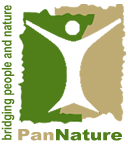In Vietnam, management of wildlife diseases has garnered attention from both the State and the public. This is evident through a comprehensive system of regulations addressing diseases that can be transmitted from wildlife to humans spanning a range of documents, from laws to decrees and circulars. However, despite these efforts, the practical implementation of wildlife disease management still encounters numerous challenges and shortcomings.
Illegal bush-meat, wildlife trafficking at alarming levels
QUANG NINH — Viet Nam’s ecosystem was seriously threatened by the widespread consumption of wild meat and trafficking of wildlife, experts said at a recent conference.
Urgent action was needed on several fronts to prevent this destruction of the nation’s wildlife and their habitat, they said.
They called for strengthened, more effective public awareness campaigns against hunting and trafficking in wild animals and for the inclusion of this subject in the school curriculum, especially in rural areas.
Tom Osbon of the Viet Nam-based Wildlife Management Office stressed the need to legalise multi-sectoral co-operation in preventing, discovering and punishing forest violations in order to protect wild animals effectively.
“It is also very important to establish special inspectors in localities which record a high number of violations,” he added.
Dr Scott Roberton, head of Wildlife Conservation Society (WCS), said that hunting wild animals for meat and trafficking had been happening in many countries, especially developing ones.
In Viet Nam, hunting and trade in wild animals had been alarming, he said.
A WCS study conducted at 200 restaurants in the central region found they consumed nearly 2 million wild animals per year. Among them, stag and wild boar accounted for around 70 per cent of the consumed meat, followed by turtle, snake, fox and porcupine.
The study estimated the demand of wild animal consumption nationwide at nearly 4,500 tonnes per year.
The Forest Protection Department discovered 1,042 violations of wild animal protection laws last year, a decrease of 400 cases over 2008, the conference heard.
Dr Nguyen Viet Dung, deputy head of the Centre for People and Nature Reconciliation, said that the real number was much higher.
Roberton added that Viet Nam was also an important link in the international wild animal trafficking chain.
Last year, authorities found more than six tonnes of elephant tusks trafficked from Africa to Hai Phong City.
And, in 2008, more than 20 tonnes of pangolins (anteaters) and their scales were seized in Viet Nam as they were being trafficked from Indonesia to China.
The Mong Cai Border Gate was one of places where wild animal trafficking is frequent.
Over the last two years, authorities have discovered 57 cases of trafficking in wild animals involving more than 7,612 individuals including monkeys and Tibetan bears and elephant tusks.



